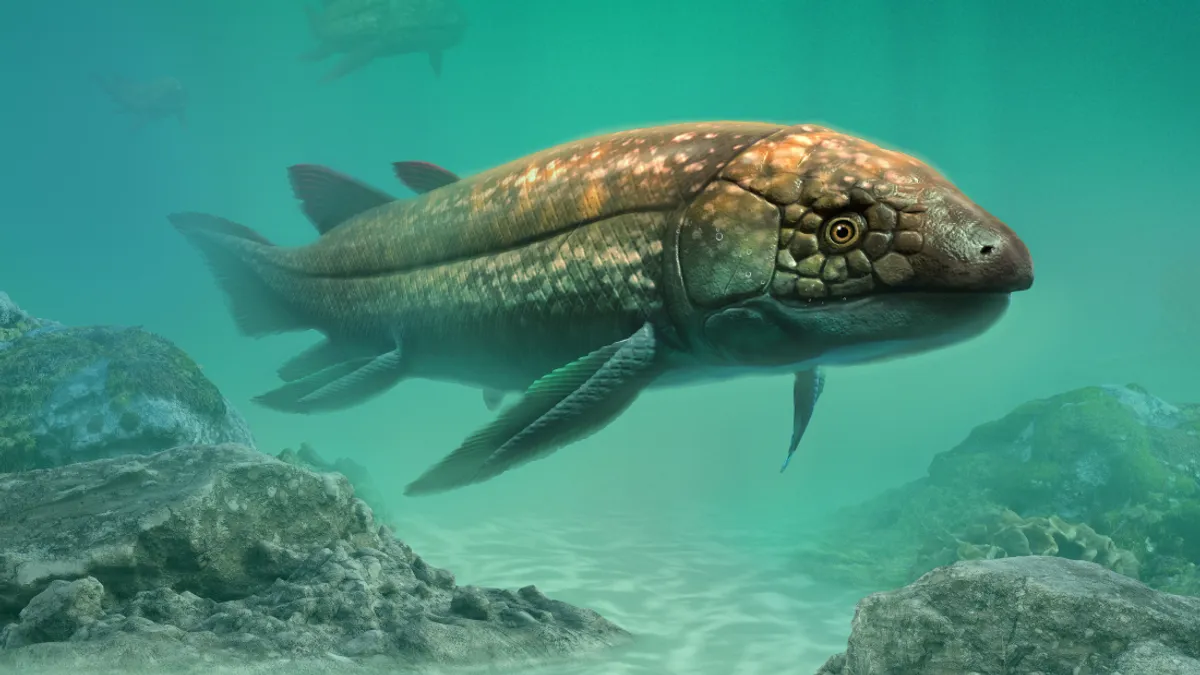The discovery of ancient fossils can transport us back in time, offering a glimpse of life as it was millions of years ago. Recently, a remarkable discovery was made in the pristine waters of the United States – the largest ancient fish fossil ever found in this region. This discovery has captured the attention of paleontologists and fish enthusiasts alike, shedding light on the aquatic biodiversity of a bygone era. Let us dive deeper into this fascinating find, unearthing the secrets of our planet’s distant past.
Unearthing the Colossal Fossil

In a serendipitous find, researchers uncovered the largest ancient fish fossil in what is now the bedrock of a lake in the United States. The fossil belongs to a colossal fish that once roamed the ancient waters, likely during the Cretaceous period. Measuring an impressive length, this find provides significant insights into the size and scale of prehistoric aquatic life.
The Cretaceous Giants

During the Cretaceous period, spanning approximately 145 to 66 million years ago, Earth’s ecosystems were teeming with massive creatures both on land and underwater. The era was known for its diverse marine ecosystems, housing numerous large fish species. This recent fossil discovery adds another piece to the puzzle of aquatic life during this prehistoric era.
The Fossil’s Distinctive Features

The fossil displays distinct characteristics that suggest it belonged to a formidable predator of its time. Its jaws, ornamented with sharp teeth and robust bone structures, indicate a fish adapted for hunting. The size and features of the fossil suggest it may have been a key player in the Cretaceous aquatic food chain.
A Glimpse into Ancient Biodiversity

Discovering such an ancient relic underlines the rich biodiversity that once existed in U.S. lakes. It provides evidence of a complex and vibrant ecosystem, thriving with varied species. These findings contribute valuable information for understanding the evolutionary history of aquatic life.
Technological Advances in Paleontology

Modern technology has played a crucial role in uncovering and preserving this ancient fish fossil. Advanced imaging technology and dating methods allow scientists to analyze the fossil in detail, ensuring that they can extract vital information without damaging the precious specimen.
Challenges in Fossil Retrieval

Extracting fossils from watery graves poses unique challenges for paleontologists. The environment in which such fossils are found can often be harsh and inaccessible. Nonetheless, careful planning and strategic excavation techniques have enabled the successful recovery of this ancient fish wonder.
Historical Context of U.S. Lake Fossils

Throughout history, several important fossil discoveries have been made in the United States, particularly within ancient lakebeds. These areas serve as vital sources of information that help us piece together the planet’s ecological and geological transformations over millions of years.
The Role of Collaborative Efforts

The success in uncovering such significant fossils is often a product of collaboration between experts from various fields, including paleontologists, geologists, and biologists. These collaborative efforts enhance the accuracy and depth of scientific understanding, all while driving innovative approaches to fossil discovery.
Implications for Modern Aquatic Life

Understanding the ancient aquatic ecosystems has implications for contemporary aquatic biodiversity research. By examining these fossils, scientists can draw parallels between ancient and modern ecosystems, shedding light on how environmental changes over millennia have shaped present-day marine life.
Public Engagement and Education

Fossil discoveries such as this one captivate the public’s imagination and generate enthusiasm for paleontology and natural history. Museums and educational institutions play a significant role in making these findings accessible, creating exhibits that foster a deeper appreciation for Earth’s history.
The Future of Ancient Fish Fossil Research

As technology advances and new discoveries arise, the field of ancient fish fossil research is poised for exciting developments. Continuous exploration and study of these invaluable artifacts will likely unravel more secrets of our planet’s rich past.
Conclusion: A Window Into Prehistoric Waters

The largest ancient fish fossil discovered in U.S. lakes provides a valuable glimpse into the Earth’s distant past, revealing insights about the extraordinary creatures that once inhabited our world. With every discovery, we broaden our understanding of the intricate tapestry of life that has unfolded across epochs. This monumental find will inspire both scientific inquiry and public curiosity, encouraging a deeper exploration of the rich history that lies hidden beneath our feet and waters.
- How Accurate Are Pet Antics in Animated Movies? - June 29, 2025
- The Crocodile in Ancient Nile and Aboriginal Creation Myths - June 29, 2025
- America’s Fastest Birds of Prey and Their Astonishing Speeds - June 29, 2025

